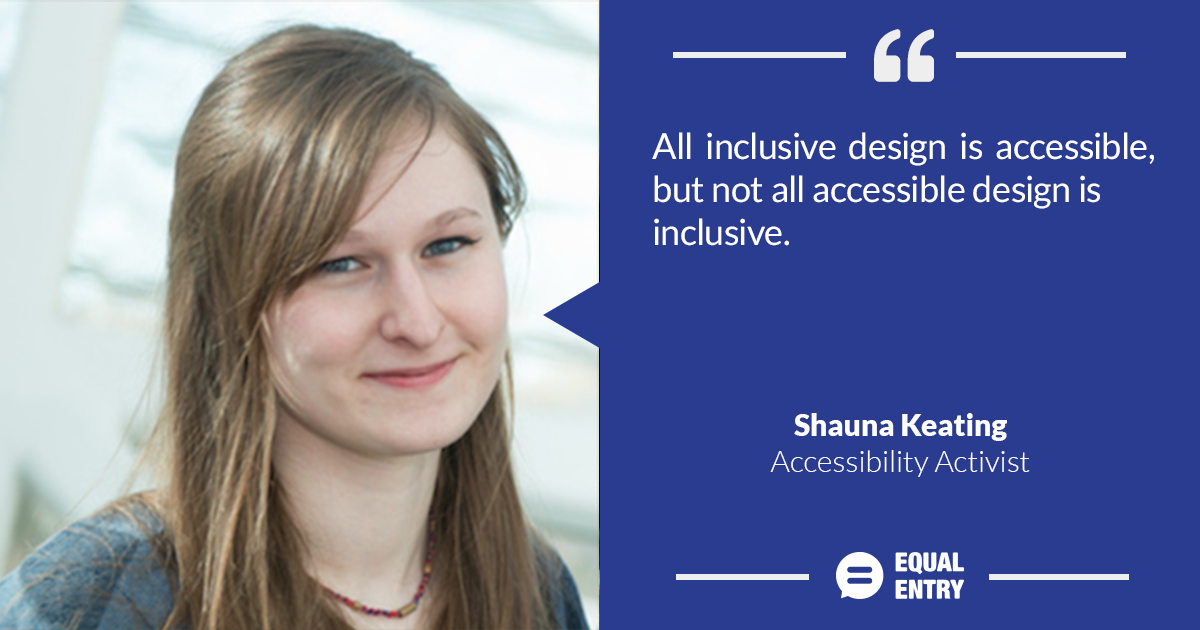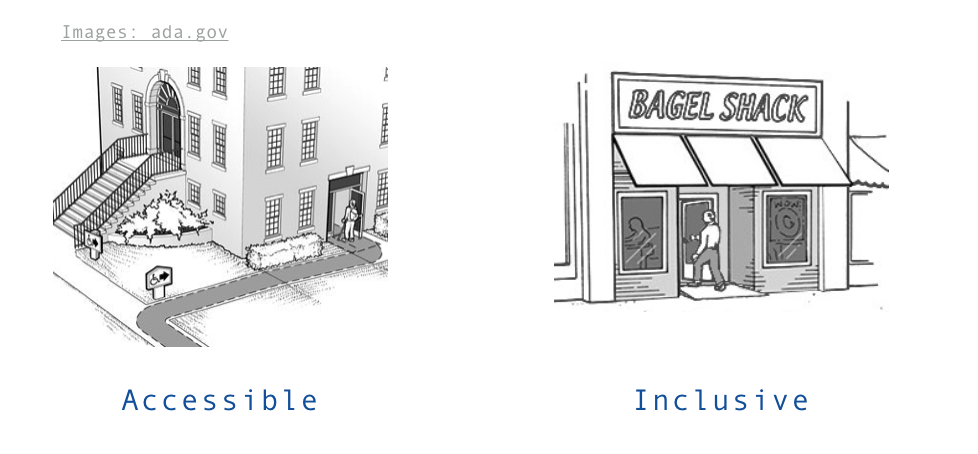Summary


Shauna Keating gave an excellent presentation at Accessibility New York City earlier this month, and we wanted to speak with her about the important work she is doing.
Keating is a designer residing in the Hudson Valley. She works as a Digital Artist at Evolving Media Network, a creative development studio in Kingston, NY specializing in creating innovative digital products. Shauna recently graduated from SUNY New Paltz, where she earned her BFA in Graphic Design. Her interest in UI/UX design comes from a desire to enhance user experience for the increasingly diverse audience of users interacting with technology.
When did you first get started in inclusive design?
Just about a year ago. As I discussed in my presentation, I started working on a project aimed at making pedestrian environments more easily navigated by people with mobility impairments. Since this would take the form of a front-end prototype, I wanted to figure out how to make the user experience’s using the interface align to the values of the concept I was working with. I wanted to learn more about all the ways I could consider needs and challenges other people face.
Inclusive design often overlaps with accessibility, but of course they are not the same. How would you differentiate inclusive design from accessibility?
All inclusive design is accessible, but not all accessible design is inclusive. The example I like to use is a front entrance to a building with a bunch of stairs leading up to it. An accessible solution to this would be to include a side entrance that doesn’t have stairs. An inclusively designed building would simply not have the stairs in the first place. Having a ramp instead of the stairs wouldn’t compromise the experience entering the building for anyone else, and would actually improve it in many cases, such as for someone trying to move furniture in and out of the building.

There are many accessibility standards for web code, but few clear standards for user interfaces. Do you think there should be?
The lack of something like this is what has driven me to this research and sharing it as much as possible. There are a lot of isolated pieces of information, but not anything like what we see for the standards in regards to code. I really do think there should be, but in the mean time, I’m trying to share what I have gathered together and continuously building on it. I’ve presented this three times since June, and every time I have had something new to add on. I really hope to keep creating content that is readily available to others. Not only is this a good mission for social good, but really does result in much better design process and solutions.
Twenty years from now, what accessibility barriers do you hope inclusive design has solved?
My hope is that technology is able to address the challenges people who experience disability face. I think inclusive design is a really important part in that. I think an area that can be much better addressed through this effort is way finding and obstacle avoidance. There is a huge amount of potential in reducing the issues faced by people with mobility impairments. In a similar way, we can make those resources more available by making sure that the interface for these type of technology is equally accessible as the physical environment we are trying to create.
Read more about Keating’s presentation on inclusive design, or watch the presentation for yourself:
This is actually useful, thanks.
I’d like to find out more? I’d care to find out some additional information.